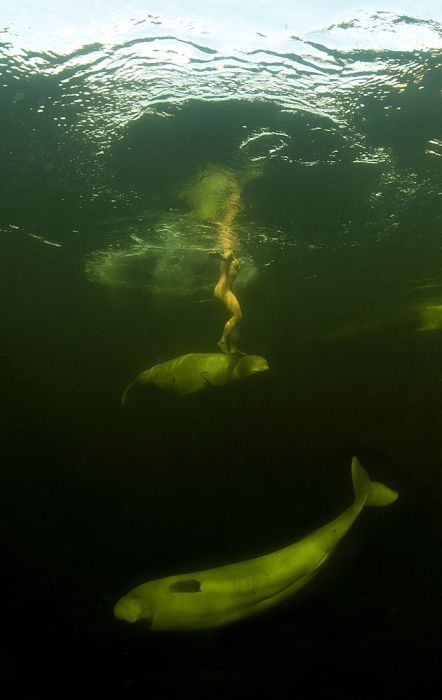|
|
Underwater World With Natalia Avseenko, The White Sea, Russia
|
Rivers bring annually about 215 km3 of fresh water, on average, mostly to the Onega, Mezen and Dvina bays. The Northern Dvina River alone may contribute up to 171 km3 in some years, with the Mezen, Onega, Kem and Vyg rivers adding up to 38.5, 27.0, 12.5 and 11.5 km3, respectively. About 40% of this volume is brought during the snow melting in May, and the inflow is minimal in February-March. This inflow raises and lowers the sea level that promotes the water exchange with the Barents Sea. As a result, annually, about 2,000 km3 and 2,200 km3 flow in and out of the White Sea, respectively. The inflow of fresh water in spring decreases the surface salinity in the top 5–10 metre layer to 23‰ (parts per thousand) in the eastern and 26–27‰ in the western parts of the sea, reaching 10–12‰ in Dvina Bay; it also increases the content of silicon and silicates in water, which is a characteristic feature of the White Sea.
Storms are the strongest in October–November. However, small sea depths reduce the wave height to the average of 1 metre, sometimes reaching 3–5 metres. The sea is quiet in July–August.
• Climate
The climate varies between polar and moderate continental with frequent fogs and clouds. Winds are predominantly southwestern in winter with speeds of 4–8 m/s. They bring cold air from the south, establishing the temperature of about –15 °C (February) over most of the sea. The northern part is warmer at about –9 °C, sometimes reaching –6 °C, due to the warm air masses from the Atlantic. Arctic anticyclones, however, change winds to the northeastern ones, bringing much colder weather with temperatures of about –25 °C. Summers are cold, cloudy and relatively humid, with northeastern winds and frequent rains. Average July temperatures are 8–10 °C. Occasional southeastern winds bring warm air from Europe, raising the temperature to 17–19 °C and sometimes even to 30 °C. Annual precipitations increase from 282 mm in the north 529 in the south.
|
|









